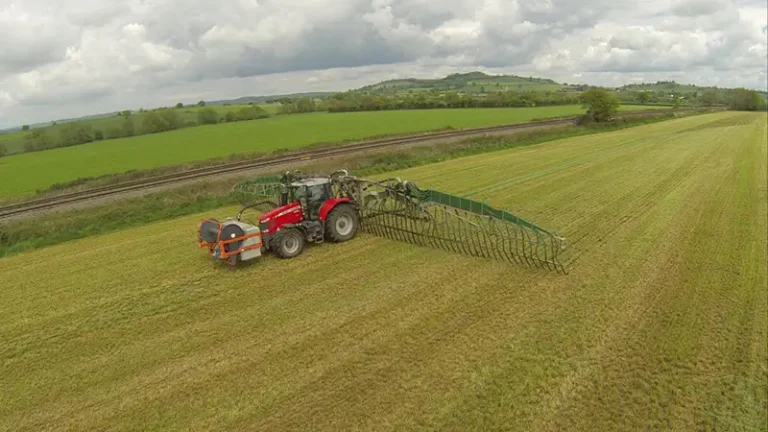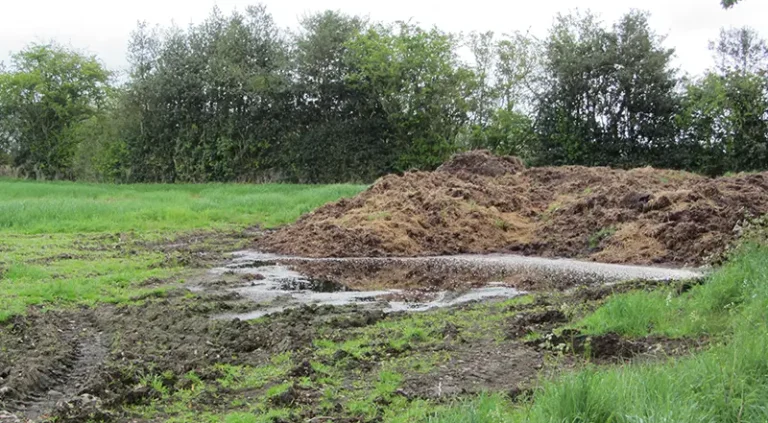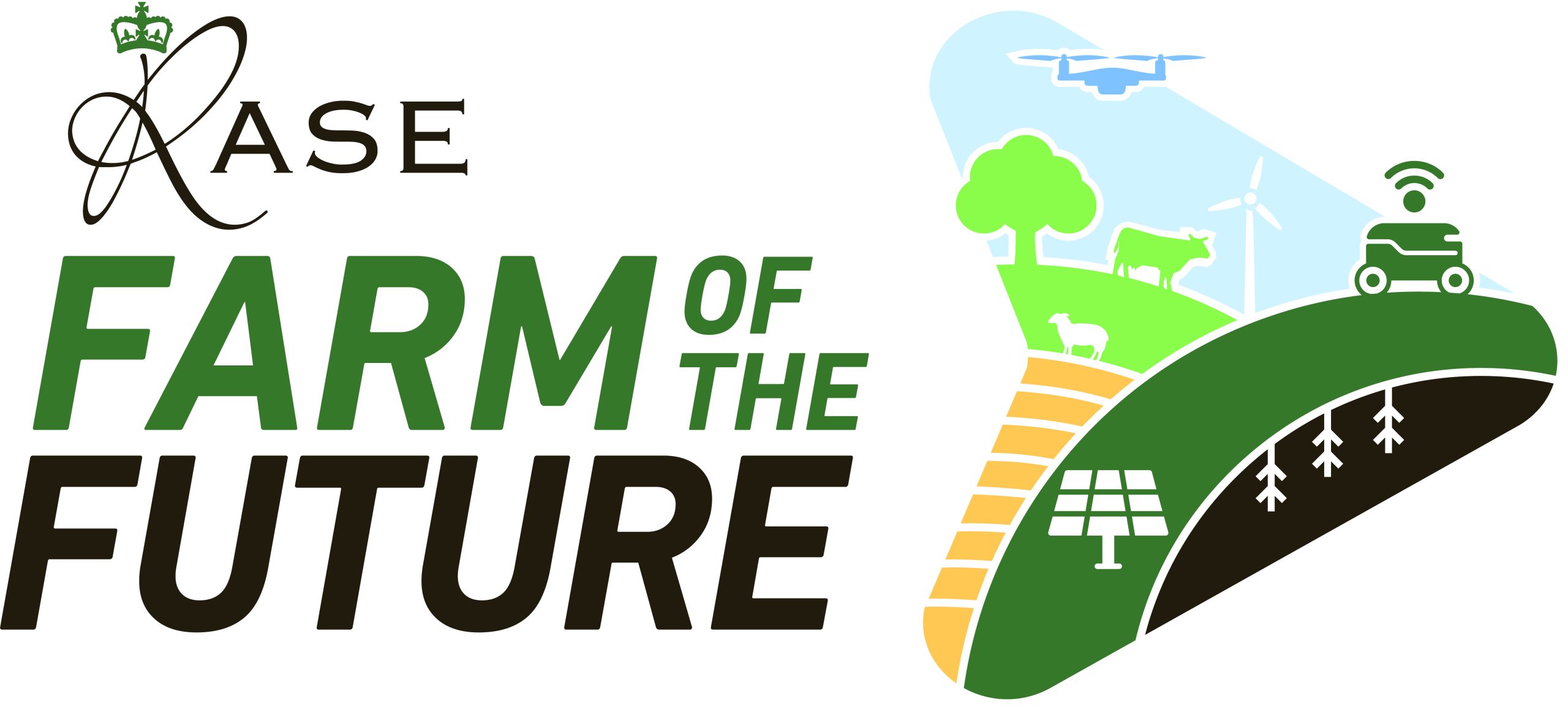by Anna Becvar
The use of organic materials, by-products, and co-products as a valuable source of plant nutrients has long been practiced. Currently around 50 million tonnes (Mt) of livestock manures, 1.9 Mt compost products, 4.3 Mt digestate products (from commercial facilities) and 3.5 Mt biosolids are applied to agricultural land in England on an annual basis. Alongside this, a considerable quantity of waste materials is applied under Environmental Permitting Regulations.
The recovery of wastes, recycling of products, by-products and co-products to land provides an opportunity to reduce the environmental footprint of food production, as well as being part of a circular economy.
Applying such materials can enable the effective use of nutrients that might otherwise be lost or released to the environment in a detrimental manner. Careful application of these materials to land benefits both crops and soils while reducing reliance on manufactured fertilisers. It is worth noting that overall manufactured fertiliser use in England and Wales has decreased by around 30% since 1982, and this reduction is significantly more for phosphate and potash-based fertilisers.

Using low emissions spreading equipment for high readily available nitrogen (RAN) fertilisers
Improving soil health
The UK Government’s 25 Year Environment Plan (2018) refers specifically to soil health and sets a goal of improving our approach to soil management by 2030. A key objective is to improve soil condition and carbon storage by adding organic matter. This needs to be achieved while balancing the equally important objectives of reducing the impact of excessive nutrients on the wider environment, taking into consideration impacts on water and air quality, as well as reducing greenhouse gas emissions.
The UK has an increasing capability to treat a wide variety of biodegradable wastes, or feedstocks, from a range of different sectors including food production, catering waste, industrial processes, water industry residues, and amenity gardens. The resulting organic materials are enhanced in terms of the beneficial nutrients they can provide, while potential risk of hazards or dis-benefits are mitigated or reduced. One key process example is anaerobic digestion (AD). The AD process breaks down biodegradable materials in the absence of oxygen to produce methane-containing biogas, and digestate – a valuable source of nutrients often referred to as ‘biofertiliser’.
The AD process changes the characteristics of the original feedstock materials, increasing pH and converting organic nitrogen (N) to ammonium N, to produce a material with more readily available N. The resulting digestate is a very good fertiliser replacement product and provides improved scope for targeted N application to meet crop need.

© Photo: Angela Bywater
Barriers to nutrient recycling
However, plastic contamination within feedstock materials, such as from household garden and food waste, presents a potential barrier to the end use of the resultant material within agriculture. Elimination or significant reduction of plastics in feedstocks is an essential solution to this problem but presents a significant challenge to the recycling industry.
Excessive application of materials to land, especially those containing large quantities of nutrients, poor timing of application, or unsuitable application techniques contribute to losses to the wider environment.
Water quality in English rivers has generally improved over the last 20 years but in 2021 this improvement appears to be flat lining. Only 14% of rivers in England meet Good Ecological Status under the Water Framework Directive, and that figure has not changed since 2009.
Climate change may be changing the frequency and intensity of rainfall events and droughts which could change the stability of nitrate in soils and lead to increased risk of soil erosion events.

Manure leaching in field storage
The regulatory landscape
The four main routes by which materials may be managed in the UK are as:
- Discarded waste to be recovered under environmental permitting regulations
- A non-waste product under a Quality Protocol
- A product or by-product which has achieved ‘End of waste’ status
- An exempt agricultural waste such as cattle slurry
The application of waste materials under the Environmental Permitting regime is strongly regulated. An up-to-date laboratory analysis of the material to be spread must be assessed both in terms of its beneficial attributes and potential dis-benefits, such as additions of potentially toxic elements such as copper, zinc, lead or mercury and physical contamination levels. The waste is assessed against receiving field soil analysis and application rate is calculated to meet crop nutrient need.
Furthermore, to adherence with Good Practice Guidance and Nitrate Vulnerable Zone regulations, attention must be given to the potential effects of the application on designated environmentally sensitive receptors. Three examples of this are:
- A site-specific risk assessment is required if the receiving land is within 500 metres of a Site of Special Scientific Interest (SSSI) that might be detrimentally affected from ammonia emissions from the waste application
- Applications cannot be carried out in a Source Protection Zone 1 (SPZ1), designated to protect drinking water supplies, and mitigation measures must be considered if the field is within a lower risk SPZ2 area
- The potential for odour from temporary storage of material and during application must also be considered and mitigated if deemed a risk
The application of materials outside of Environmental Permitting has been less heavily regulated. This is perhaps changing with a recent more vigorous interpretation of the Farming Rules for Water (FrFW), initially introduced in 2018, to fulfil diffuse pollution obligations under the Water Framework Directive.
Rule 1 aims to ensure that ‘all reasonable precautions’ are taken to prevent diffuse pollution following the application of organic manures and manufactured fertilisers. To comply with Rule 1, farmers must demonstrate they have planned nutrient applications to ensure they are applied in quantities that are sufficient to meet, and not exceed, the crop and soil requirements.
FrFW is pertinent to all types of organic materials which contain readily available nitrogen (RAN). Only applications to crops such as winter oilseed rape and grass to support late season growth in August and September are deemed acceptable.
This new approach closes the window for applications of a wide range of organic materials that have moderate, and relatively low RAN, including livestock manures, biosolids, and some by-products applied directly to land. It does enforce much better use of high RAN materials, such as digestate, which should be stored and used when nutrient uptake from them can be optimised.
However, the process of gaining planning permission for new storage facilities is currently a slow one, often exceeding two years, and is not keeping pace with need or the speed of regulatory requirements.
Nutrient management planning should consider the source, pathways, and receptors model for pollution. This can sometimes make overarching national policy seem draconian and leaves little room for consideration of mitigating risk where, for example, pathways to surface water and groundwater are remote.
The European Commission has sought to encourage large scale fertiliser production from domestic organic or secondary raw materials in line with the circular economy model, by transforming waste into nutrients for crops. The EU Fertilising Products Regulations published 5 June 2019 seek to harmonise the requirements for fertilisers produced from phosphate minerals and from organic or secondary raw materials in the EU, opening new possibilities for their production and marketing on a large scale.
Great Britain and Northern Ireland have historically operated separate domestic regulatory regimes under the Fertilisers Regulations 1991 and the Fertilisers Regulations (Northern Ireland) 1992, respectively. A review of the UK Fertiliser Regulations presents an opportunity to streamline the categorisation of nutrients produced from the circular economy.
Innovation in the recycling industry is flourishing. Companies are exploring the production of fertilisers and fertiliser replacement products from a wide range of individual wastes and combinations of waste streams. One example is further treatment of digestate to produce ammonium sulphate fertiliser, which can be used more efficiently and improve both the producer and farmers operational carbon footprint.
